Grow a Beautiful Garden With Ecofriendly Greywater
You’re probably irrigating your yard with drinking water, since the same water that comes out of your kitchen faucet also comes out of your hose bibs. But do your plants need drinking water? It turns out that most plants are perfectly happy with gently used water from showers, bathtubs, laundry and sinks — or greywater (also “graywater"). This works out well, because the average American household uses about half its water indoors and the other half outside for irrigation. Some households can cut their water bills almost in half by irrigating with greywater.
Now that large swaths of the country are facing historic drought conditions — and the possibility that these droughts are the new normal — it especially doesn’t make sense to send usable water down the drain. You can recapture that water and use it again. There are other benefits to greywater, too. It reduces a home’s carbon footprint, since moving and treating water consumes a tremendous amount of power. It protects the aquatic ecosystems from whence your water comes. It reduces loads on sewage systems (which lowers the carbon footprint) and puts water back into the local aquifer, which is better than dumping it into rivers, lakes and oceans. If you’re on a septic tank, it reduces loads on the system, prolonging your service intervals. And it helps grow a beautiful and bountiful garden.

Greywater systems don’t look like normal irrigation. For one thing, there’s stuff in it — small amounts of soap, hair, laundry lint etc. You can either process the water and try to filter everything out, or you can use larger pipes and emitters and send the water to your garden as is. The latter is the better option — ideally, a greywater system should be low tech and dependable, with a minimum of parts to break and filters to maintain.
Setting up a greywater system involves:
Replumbing greywater fixtures away from the sewer and toward the greywater systemInstalling the greywater system itself andInstalling irrigation in the yard.
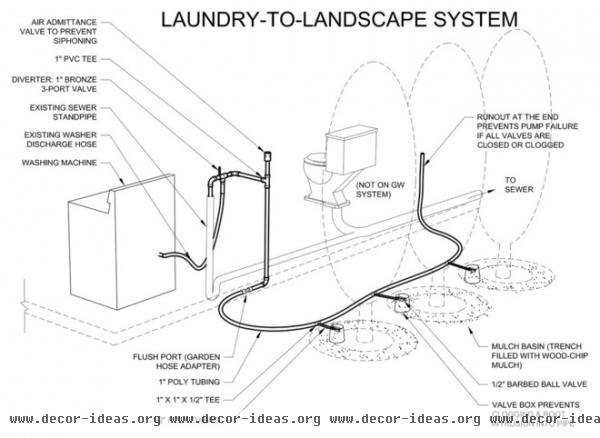
Basic Greywater Systems
Laundry-to-landscape system. The easiest place to start with greywater is the washing machine. Since the water comes out of a hose on the back of the machine, there is no need to alter the plumbing under the house. The most common washing machine system is called a laundry-to-landscape system, which uses the washer’s internal discharge pump to help move water out into the yard, where it is distributed into mulch basins through a network of ½-inch ball valves.
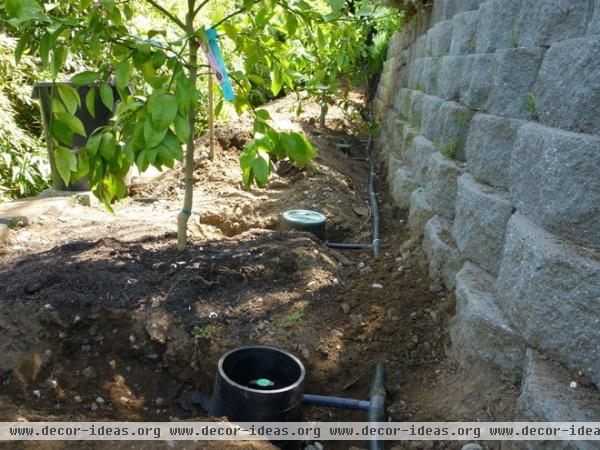
Here are the exposed pipes of a laundry-to-landscape system.
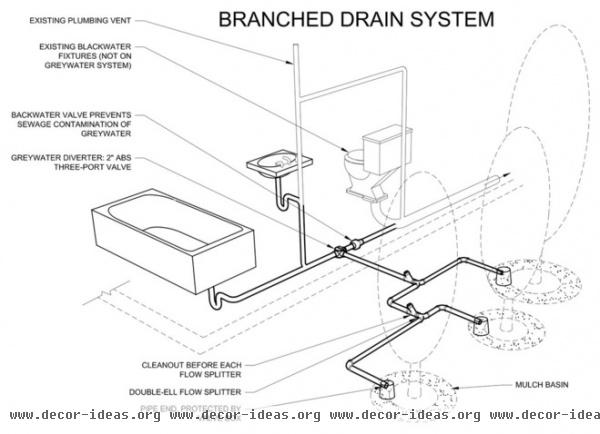
Branched drain system. A common greywater system for bathtubs, showers and sinks is a branched drain system. It’s a gravity-flow system with no storage tanks, pumps or filters; it relies on gravity and mulch to distribute water in the landscape. Drains from greywater fixtures are combined into a single pipe, which is diverted away from the sewer and outside the house.
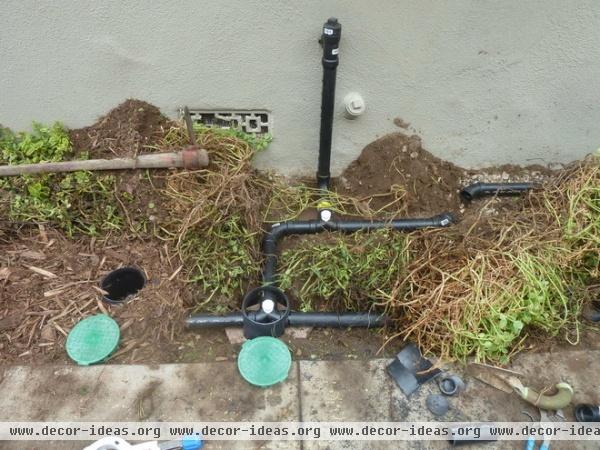
Once outside, the flow is divided and subdivided into multiple branches to be spread to various outlets in the yard. Since the pipes need to flow slightly downhill, this system may not work on flat lots or if the area to be irrigated is above the house.
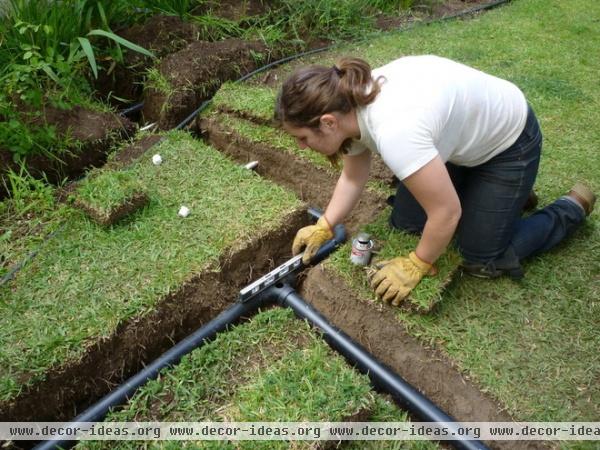
Here a worker levels the flow splitter of a branched drain system.
Sump-pump systems. If the areas to be irrigated are far from your house or uphill, you’ll probably need a pump. The best way to do this is with a sump-pump system: Greywater fixtures (bathtubs, sinks, showers and laundry) are rerouted to drain to a basin containing a submersible pump activated by a float switch that shoots the water out as soon as it gets deep enough. Remember that no freshwater irrigation system will work with greywater — it would rapidly clog — so distribution in the landscape should be similar to that of the laundry-to-landscape system: a network of tubing no smaller than ½ inch to allow the passage of suspended solids, distributing water into mulch basins.
Complex systems. Finally, to use greywater with multiple timed zones, there are complex systems. There are several of these on the market: proprietary systems with their own computerized controllers, capable of high-efficiency timed irrigation to multiple zones, with rain sensors and with automatic back-flushing of filters so you don’t have to clean them.
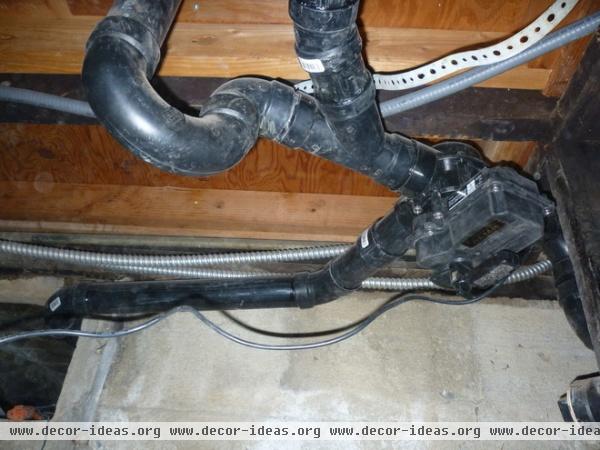
Elements Common to All Greywater Systems
Diverter valve. Shown here with a remote actuator, a diverter valve allows you to turn the greywater system off — if your plants are getting too much water or you’re putting something down the drain (like laundry bleach) that could harm your soil. The diverter valve allows you to send greywater back to the sewer if needed.
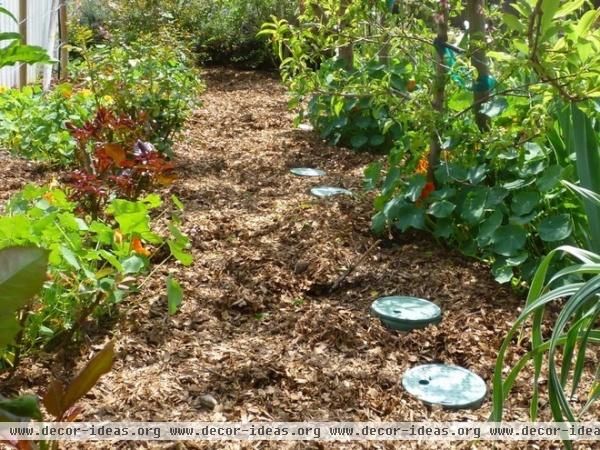
Wood-chip mulch. It’s hard to overstate the importance of mulch beds. Mulch filters greywater, contains large flows and allows the water to spread horizontally through capillary action.
Subsurface emitters. Since it’s nonpotable, greywater cannot be distributed via a sprinkler. It is distributed either underground, or on the ground and covered with several inches of mulch.
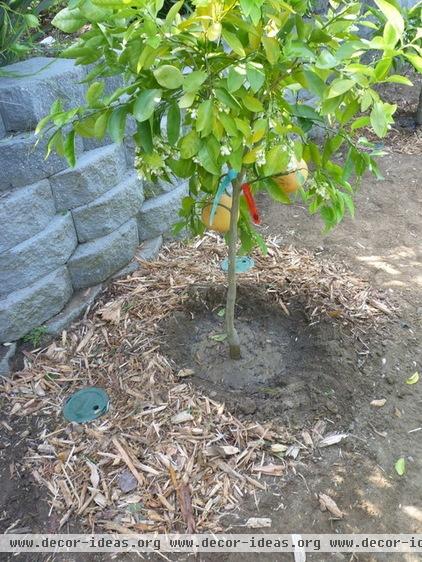
Common Greywater Mistakes
Thinking you can water a lawn with it. Greywater is nonpotable and cannot be used in sprinkler systems. This makes almost all greywater systems incompatible with grass. Lawns in general use a tremendous amount of water; for folks considering greywater, we recommend tearing up the lawn and replacing it with native plants that don’t need external irrigation — then use greywater for fruit trees, shade trees, ornamentals and perennial vegetables.
Storing it. Greywater should not be stored in a tank. Trace amounts of organic matter will cause anaerobic bacteria growth and funky odors. It’s better to just put it in your soil immediately and thus eliminate any problems.
Overcomplicating things. Pumps and filters generally just mean more things that can break and that need maintenance. Don’t pump greywater if you can do the same job using gravity. Don’t install a filter system that involves routine cleaning unless you are willing to clean or replace it for the next 10 years. Consider the carbon footprint of the system: In cases with elaborate piping and pumps, the carbon footprint will never be offset by the water savings.
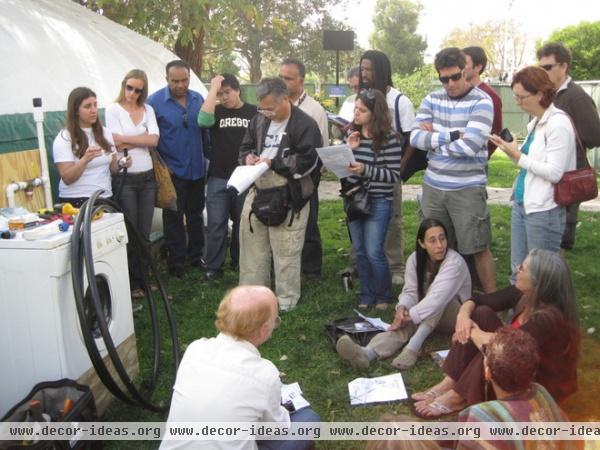
Questions to Ask
Do you have pipe access below the bathrooms? Second-story bathrooms can mean invasive replumbing to run separate greywater lines, and bathrooms directly on a slab-on-grade foundation can be impossible since the plumbing is entombed under concrete. However, you can almost always do a washing machine system, for which the greywater can be captured directly off the discharge pipe.
Are you planning to do the work yourself? Laundry-to-landscape systems can be installed by a reasonably handy homeowner (although it helps to do plenty of research and attend a workshop first). Anything else will involve altering the building’s waste plumbing and should be undertaken only by a professional.
Does your plumber have a basic understanding of greywater? Most don’t. Greywater systems violate the essential plumber’s creed: that there is supply, and there is waste, and never the two shall meet. With greywater you are reusing “waste” as supply for irrigation (in other words, you aren’t wasting it!), which for some plumbers can cause the needle to scratch across the record and the saloon to go silent. Some of the weirdest greywater systems we’ve seen have been installed by plumbers.
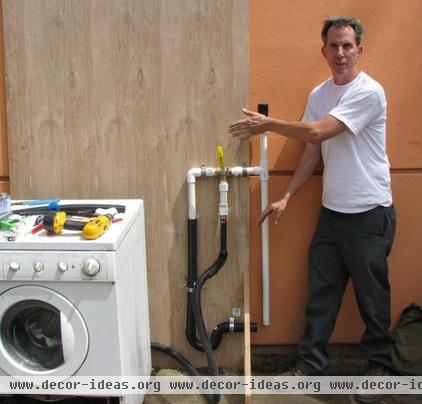
Are there experienced greywater system installers in your area? The bigger cities out West may have experienced greywater installers, but in most other areas you’ll be on your own. Recent interest in permaculture — integrated sustainable and self-sufficient agricultural ecosystems — has spawned interest in greywater, so that community may be a place to look for installers. If you are hiring someone, expect to pay at least $1,000 for a laundry-to-landscape system, $2,000 for a branched drain system and $4,000 for a pumped system. Complex systems can be quite a bit more. Greywater Action has a list of trained installers on its website.
What are the local building codes? Find out what’s legal and what needs a permit. After many years of restrictive greywater codes, many Western states have recently eased up on greywater. In California washing machine systems can be installed without permits if simple guidelines are followed.
More info: Greywater Corps
Related article: How to Harvest Your Rainwater












